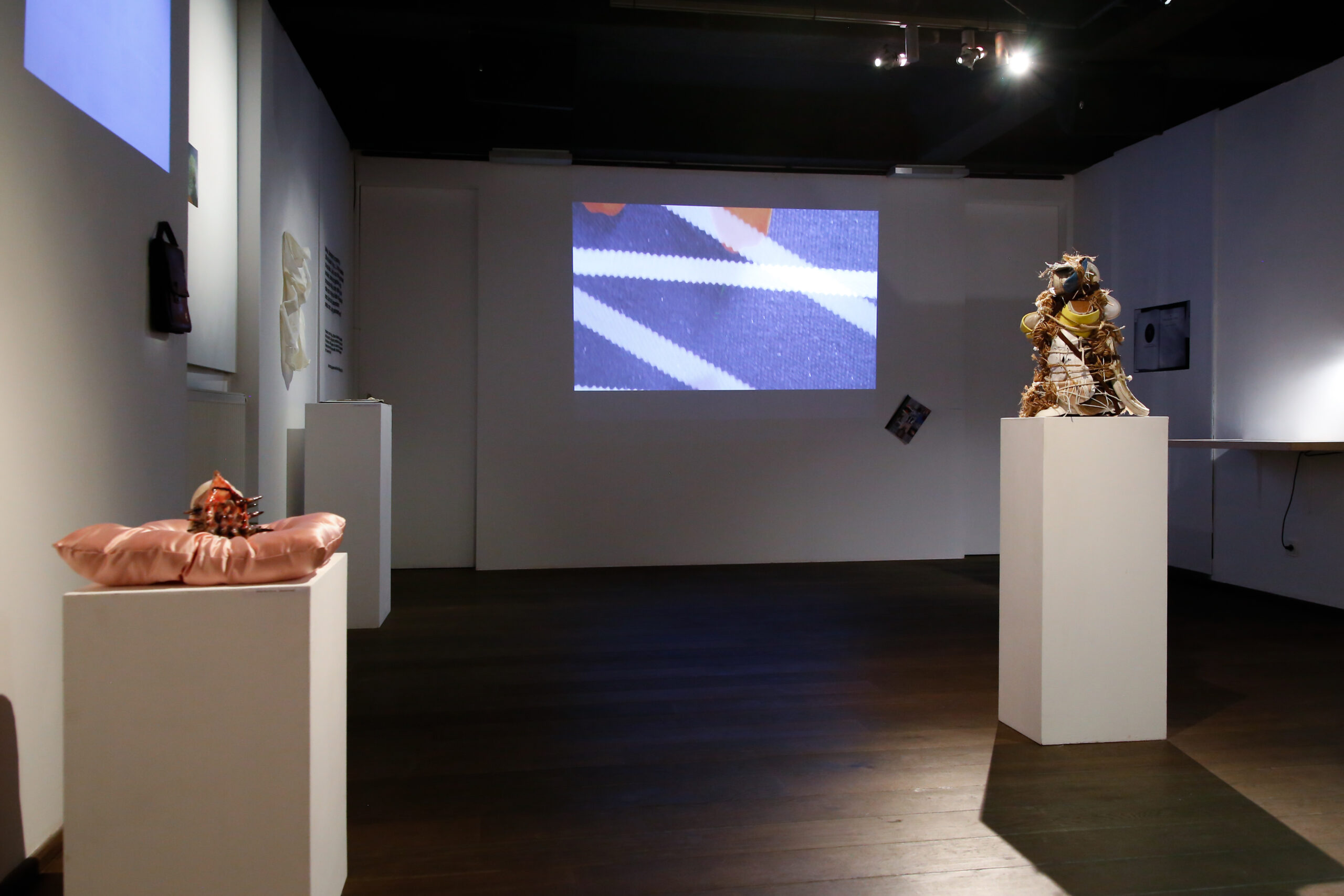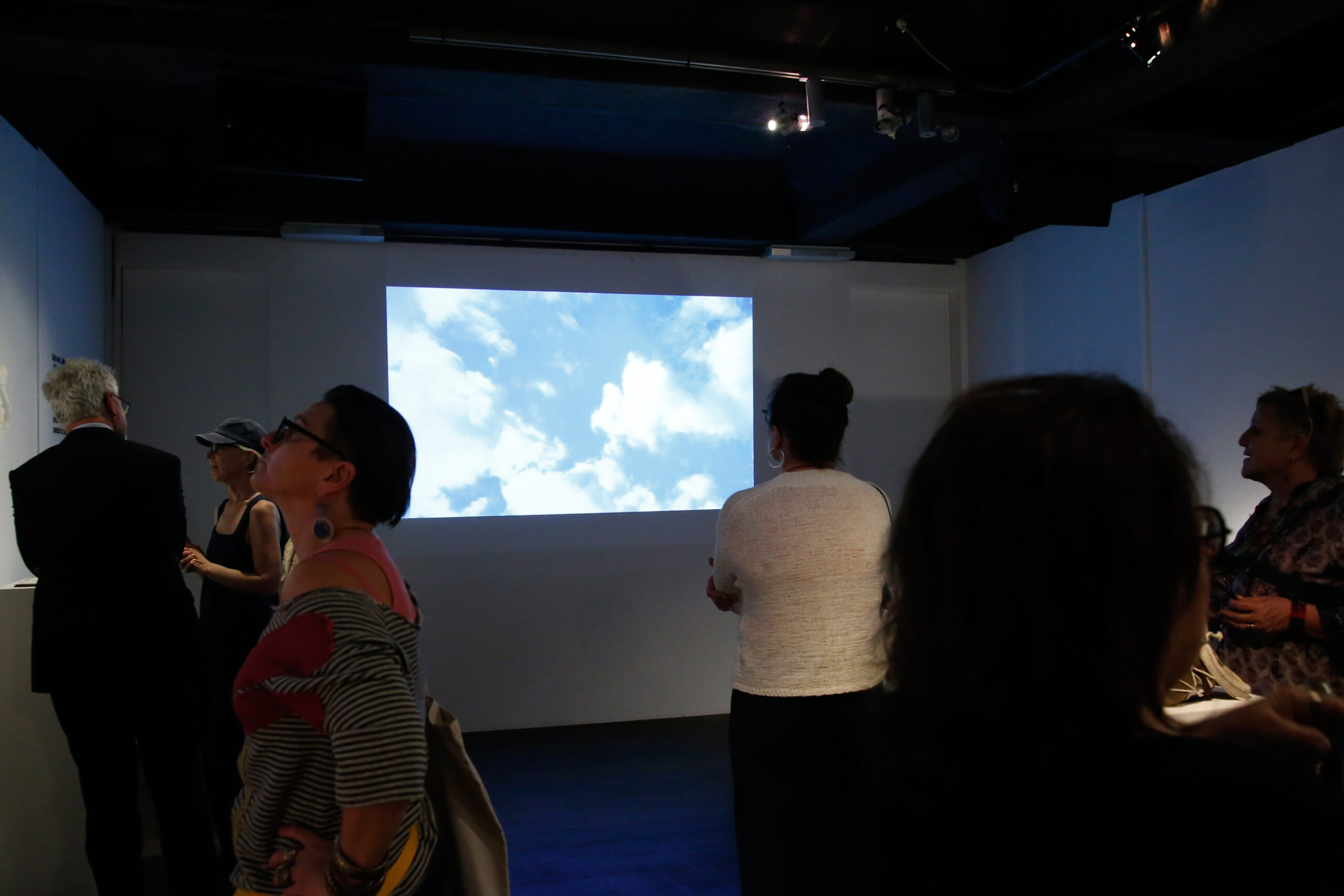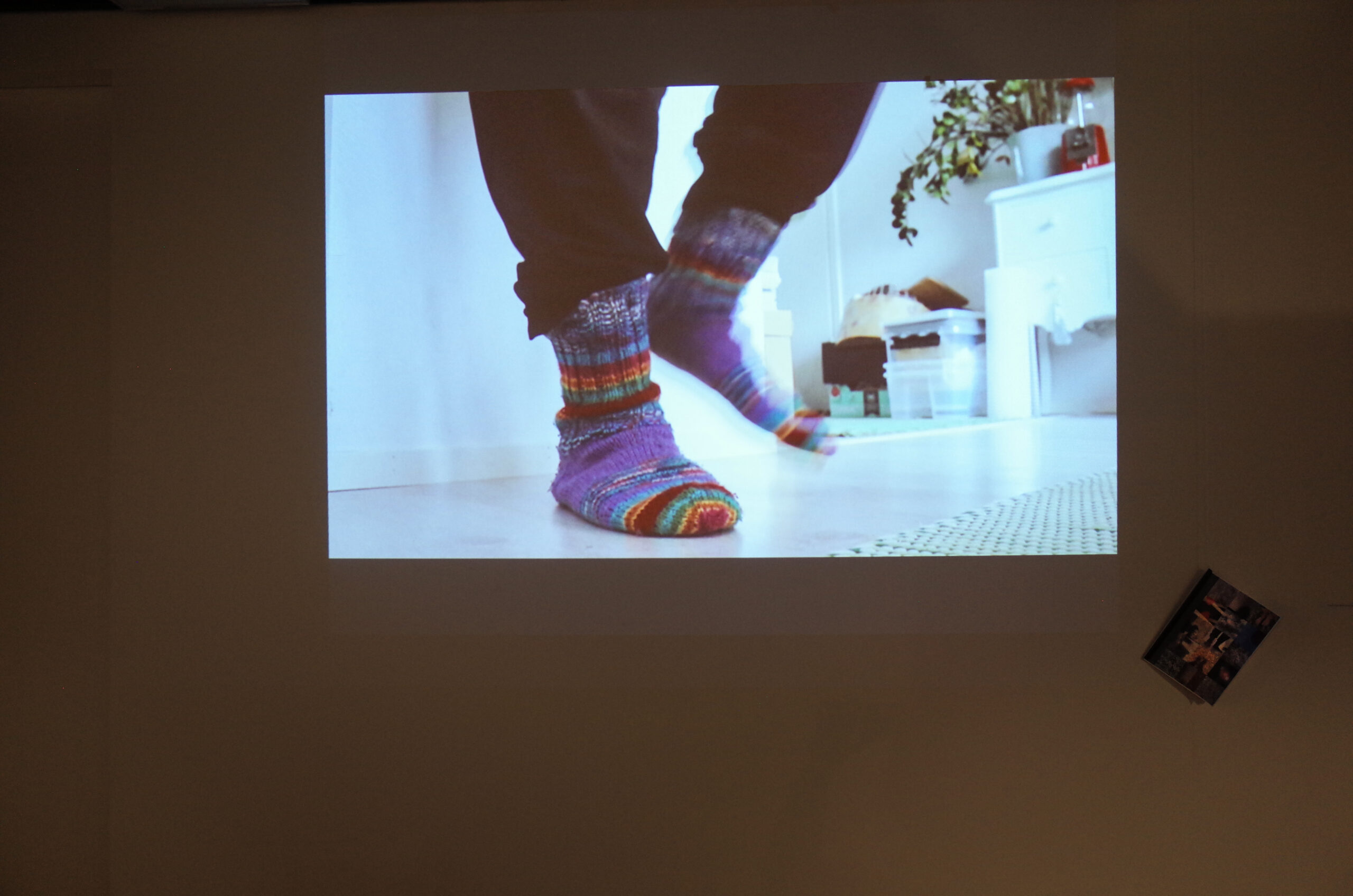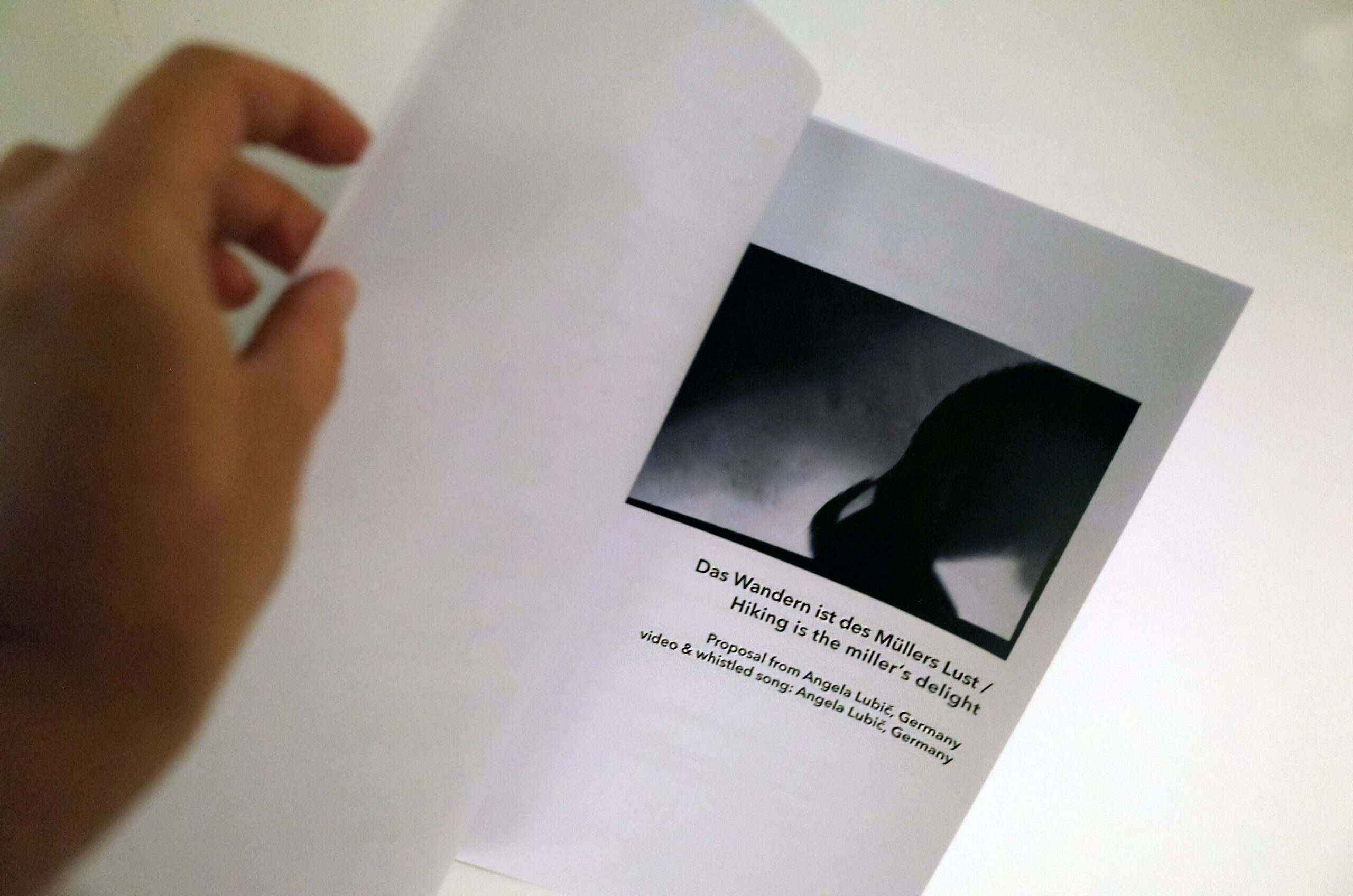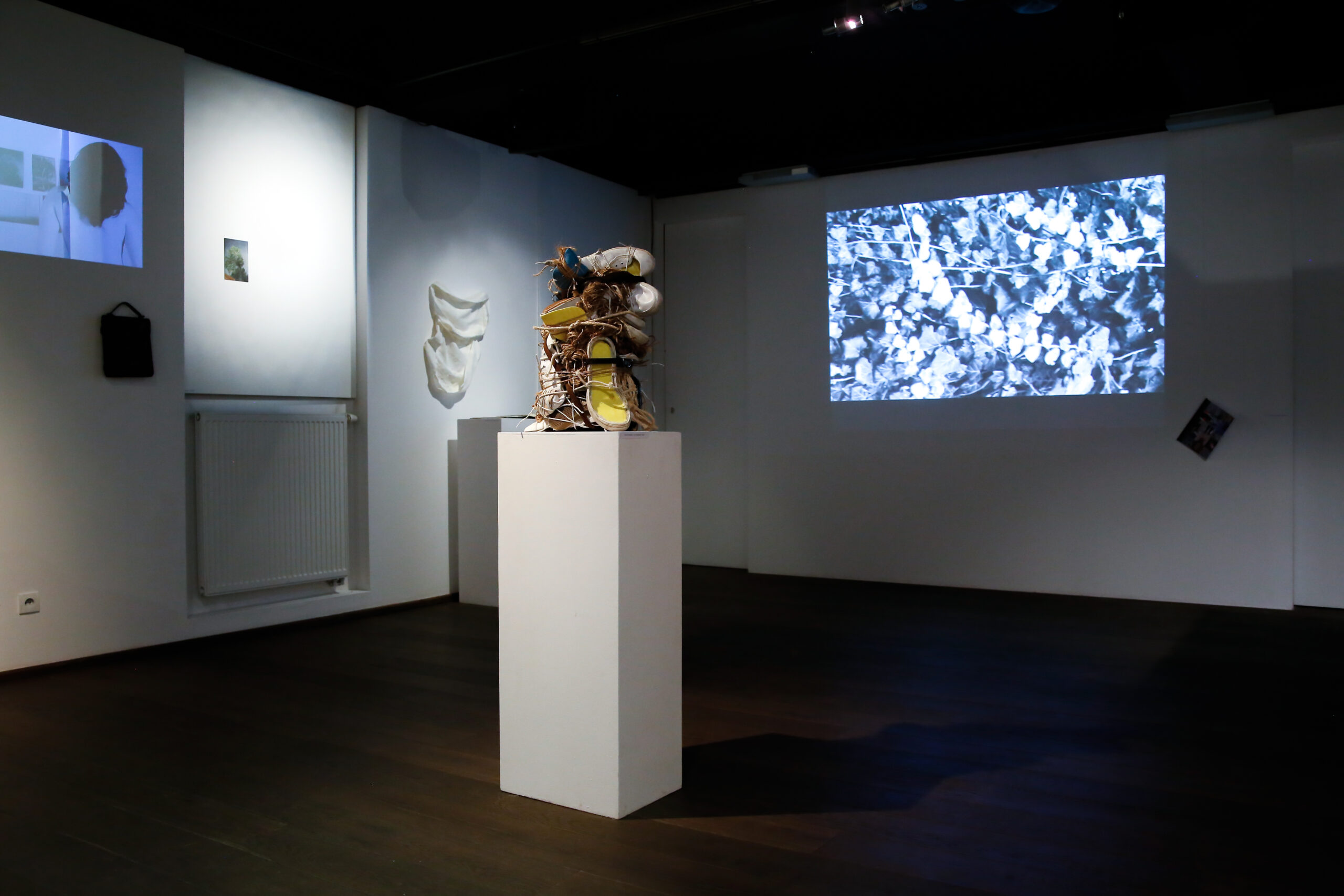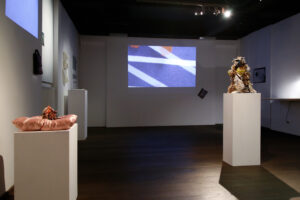
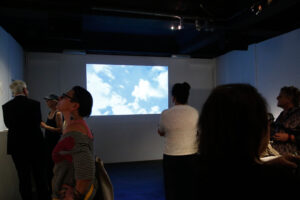
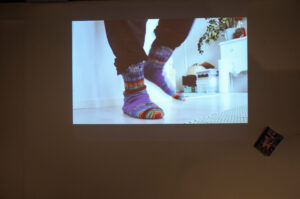
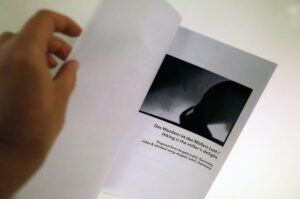
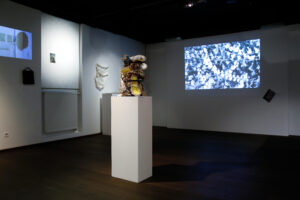
„Wohin soll denn die Reise gehn….“
partizipatorisches Projekt / Sound- und Videoinstallation
Für das Projekt „Wohin soll denn die Reise gehn“ habe ich Frauen aus verschiedenen Ländern (Ungarn, Polen, Frankreich, Italien, Korea, Japan, Australien, Finnland, Argentinien, Syrien und Deutschland) gebeten mir eine Tonaufnahme eines Reiseliedes in ihrer Muttersprache zu singen und eine dazugehörige Videoaufnahme zu schicken. Die Ton- und Videoaufnahmen wurden jeweils angepasst und bearbeitet.
In den Videos sind laufende Füße und Wanderschuhe, vorbeiziehende Landschaften, Himmel, Blüten und abstrakte Motive zu sehen.
Zum Projekt entstand eine Broschüre mit allen Liedtexten in der Originalfassung und englischer Übersetzung sowie einem kurzen Statement zur Auswahl des jeweiligen Liedes.
Wander- und Reiselieder können unterschiedliche Stimmungen hervorrufen, sind sie doch oft traditionsbehaftet, erzählen von der Lust die Welt zu erobern, aber auch vom Abschied der Hinterbliebenen.
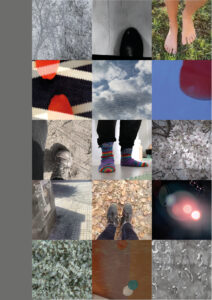
Wohin soll denn die Reise gehn – Begleitheft zur Videoinstallation
Infos zum Ausstellungsprojekt:
Woman artist on journey
The Nuremberg House in Krakow / Dom Norymberski
In a broad sense, the exhibition is a reflection on the nature of traveling and a journey itself. Some people willingly travel for tourism or business
purposes. Others are forced to leave their homes. Many have been abducted from their homes and taken on unwanted journeys by their pursuers.
Means of transport are also important here. In 19th-century caricatures, women who dared to ride bicycles were compared to witches traveling
on broomsticks. Later, this reluctance was continued in prejudice and mistrust towards women drivers.
The starting point for the exhibition is the figure of a woman – a traveling artist, which here refers to the biography of Teresa Feodorowna Ries
(1866-1956), but also to the reasons for journeys taken by contemporary women artists. Women’s journeys are a special issue because due to their
position in society, women’s freedom to travel and move around was and still is limited in some countries. Women also travelled against their will,
being kidnapped or taken to their husband’s house. Another limitation is the potential dangers of travel, to which women traveling alone are much
more vulnerable.
Teresa Ries made many journeys for both artistic and adventure purposes, e.g. considered as a dangerous, journey to the Baikal Lake. In her elder
age, she had to flee Vienna, leaving everything behind to avoid deportation and save her life. She found refuge in picturesque Swiss Lugano – her
“bitter paradise”, where she spent the rest of her life under a changed name. Until her death, she corresponded with the Austrian authorities,
seeking to find and protect her artworks.
One may also take someone on a journey or follow someone’s footsteps. Contemporary women artists follow in the footsteps of Teresa Ries,
but also “take her on a journey” to places she didn’t managed to visit.
Judith Augustinovic (Austria)
Mika Aya Azagi (Israel)
Anna Bochkova (Germany)
Iwona Demko (Poland)
Valerie Habsburg (Austria)
Andrea Steinwidder (Austria)
Anka Leśniak (Poland)
Angela Lubic (Germany)
Malwina Niespodziewana (Poland)
Patricia Pisani (Germany)
Susanne Pittroff (Germany)
